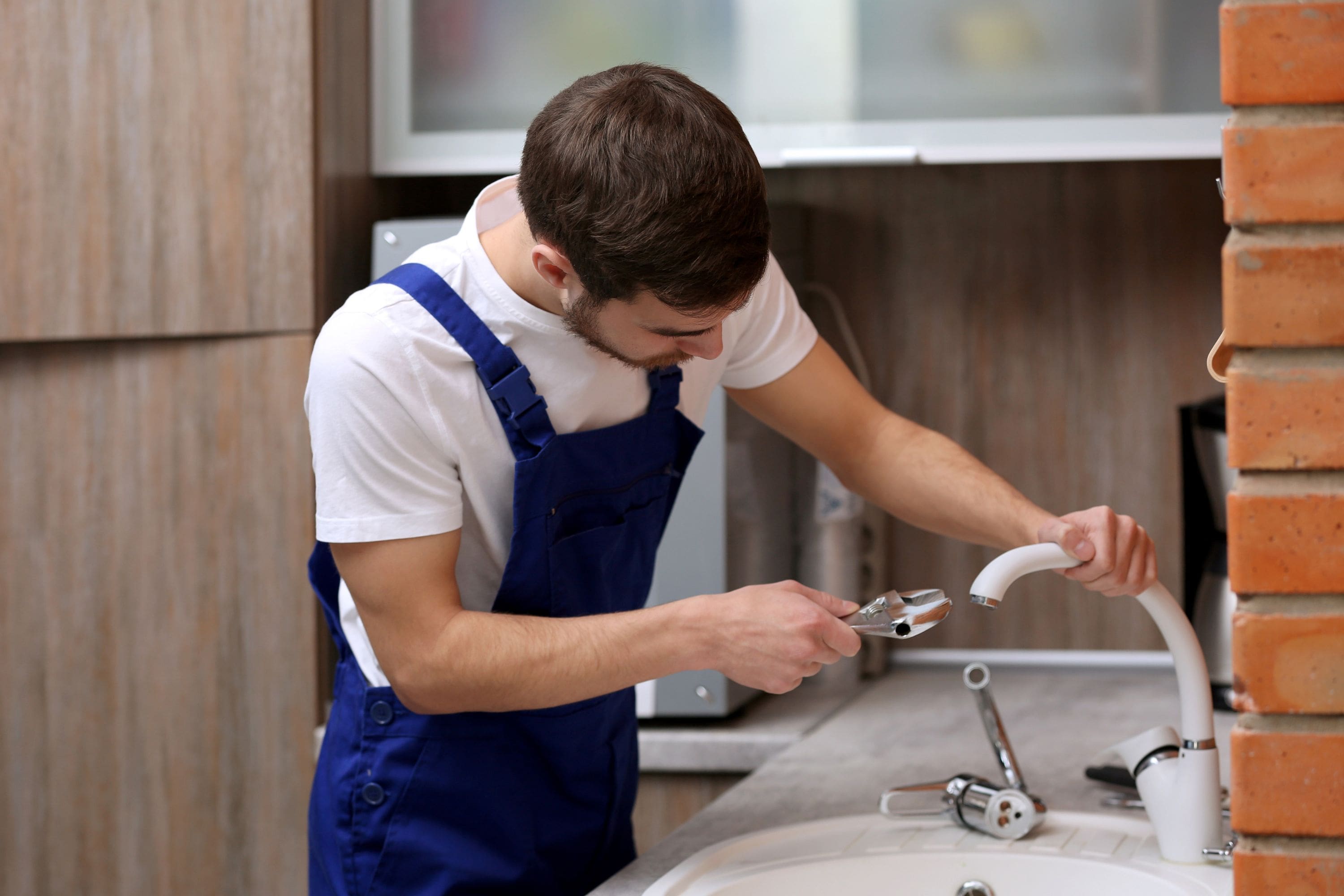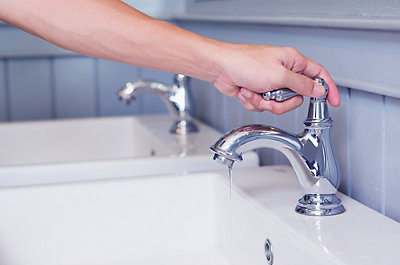Understanding the Importance of Repairing a Dripping Faucet
Understanding the Importance of Repairing a Dripping Faucet
Blog Article
This post further down on the subject of Leaky Faucets: Why They Happen & What to Do About Them is exceedingly interesting. You should look it over.

Leaking taps may appear like a small aggravation, yet their influence surpasses simply the nuisance of the sound. From wasting water to incurring unneeded economic prices and health and wellness dangers, disregarding a dripping faucet can bring about numerous effects. In this post, we'll explore why it's essential to resolve this usual home issue without delay and efficiently.
Wastage of Water
Ecological Impact
Dripping taps contribute dramatically to water wastage. According to the Epa (EPA), a single tap trickling at one drip per second can throw away more than 3,000 gallons of water annually. This not just strains water resources however likewise affects ecosystems and wild animals dependent on them.
Financial Prices
Enhanced Water Bills
Past the environmental effect, dripping taps can inflate water bills significantly. The accumulated waste over time equates right into higher energy expenses, which might have been stayed clear of with timely repair services.
Possible Home Damages
Moreover, prolonged leaking can bring about damage to fixtures and surface areas bordering the tap. Water accumulation can cause staining, deterioration, and even structural issues if left ignored, resulting in added fixing prices.
Health and wellness Concerns
Mold And Mildew and Mold Growth
The consistent presence of dampness from a dripping tap creates a perfect setting for mold and mold development. These fungi not just endanger indoor air top quality but additionally position health and wellness threats, particularly for individuals with respiratory system problems or allergies.
Waterborne Illness
Stationary water in trickling taps can become a breeding ground for germs and various other pathogens, increasing the risk of waterborne illness. Pollutants such as Legionella germs prosper in stagnant water, potentially causing severe health problems when ingested or breathed in.
DIY vs. Professional Repair work
Advantages and disadvantages of DIY Repair
While some might attempt to repair a trickling tap themselves, DIY repair work feature their own set of difficulties. Without appropriate expertise and devices, do it yourself efforts can exacerbate the issue or result in incomplete repair work, extending the issue.
Benefits of Working With a Specialist Plumber
Working with a specialist plumber makes sure that the underlying root cause of the leaking faucet is dealt with effectively. Plumbings possess the proficiency and equipment to detect and fix faucet issues successfully, conserving time and reducing the risk of more damage.
Step-by-Step Overview to Taking Care Of a Dripping Faucet
Devices Needed
Prior to attempting to repair a trickling faucet, gather the required devices, including a flexible wrench, screwdrivers, substitute parts (such as washers or cartridges), and plumber's tape.
Typical Faucet Issues and Their Solutions
Identify the sort of tap and the details problem causing the drip. Common troubles consist of worn-out washing machines, rusty valve seats, or faulty O-rings. Describe maker directions or online tutorials for detailed assistance on repair services.
Preventive Measures
Normal Maintenance Tips
To stop dripping taps, carry out regular maintenance such as cleansing aerators, examining for leakages, and replacing worn-out components immediately. In addition, think about mounting water-saving devices or upgrading to a lot more reliable fixtures.
Value of Prompt Services
Addressing leaking taps as quickly as they're seen prevents additional water wastefulness and possible damages, inevitably conserving both water and cash in the future.
Influence On Residential Property Worth
Understanding of Well-Maintained Building
Keeping a property in good condition, including resolving upkeep concerns like dripping taps, enhances its viewed worth and value amongst possible buyers or occupants.
Influence on Resale Value
Features with properly maintained plumbing components, including faucets, command greater resale worths in the property market. Addressing dripping faucets can add to a favorable impact throughout residential or commercial property evaluations and arrangements.
Ecological Duty
Specific Payment to Preservation
Taking duty for dealing with trickling taps straightens with wider initiatives toward water conservation and environmental sustainability. Every individual's activities jointly make a substantial effect on preserving valuable sources.
Lasting Living Practices
By prioritizing timely fixings and embracing water-saving behaviors, individuals add to lasting living techniques that benefit both existing and future generations.
Final thought
Dealing with a dripping tap goes beyond plain benefit; it's a vital action towards conserving water, minimizing financial expenses, and safeguarding health and wellness and residential or commercial property. Whether via DIY repair services or specialist support, acting to deal with dripping faucets is a tiny yet impactful means to promote liable stewardship of sources and contribute to a healthier, much more lasting future.
How to Fix a Leaky Faucet: Step-by-Step Repair Guide
A leaky faucet may seem like a simple annoyance, but if it's not fixed promptly, that leak could cost hundreds to potentially thousands. From water damage to mold, mildew, and high water bills, even a tiny leak can be catastrophic if left unattended. Damage like this can even affect the overall value of your home, so it's important to take the right approach for leaky faucet repair. You may need the help of a plumber in some cases, but we've got a few tips you can try on how to fix a leaky faucet before calling the pros.
Four Faucet Types
When you're learning how to fix a leaky faucet, the first step is knowing what kind of faucet you're working with! There are four common types.
Cartridge Faucets
Cartridge faucets come in one- or two-handled varieties. In one-handled cartridge faucets, hot and cold water combines in a single cartridge. In the two-handled versions, hot and cold water are controlled separately and mixed in the faucet.
Ball Faucets
Ball faucets have a single lever you push up and down to adjust the pressure and rotate to change the temperature. A slotted metal ball controls the amount of water allowed into the spout.
Compression Washer Faucets
They're the oldest type of faucet, but they're still used in many homes — especially older ones. Compression faucets have two separate handles that, when turned, raise or lower the washer that seals a water valve. This valve stops water from flowing through the faucet when it is turned off.
Disc Faucets
Disc faucets rarely need to be repaired due to their maintenance-free design. The water flow is controlled by two discs — the upper one raises and lowers against a fixed lower disc, creating a watertight seal. If your disc faucet starts leaking, you may need to replace the seals or clean residue buildup from the inlets.
Fixing a Leaky Faucet
Step 1: Turn Off the Water
Whether you're learning how to fix a leaky bathtub faucet or how to fix a leaky kitchen faucet, always turn off the water supply to your working area when you're fixing a leak. The last thing you want is a flood added to your list of things to fix.
Look for the shutoff valves below your sink or around the tub and turn them clockwise to stop the water flow. If your faucet doesn't have shutoff valves, you may need to turn off the water for the whole house. Check to make sure it's off by turning the faucet on. If nothing comes out, you're ready to start the repair.
Step 2: Take Apart the Faucet
How you disassemble your faucet depends on the type of fixture you have. You can use a flathead screwdriver to remove the caps on top of the handle or handles for cartridge and compression faucets. Inside, you should see handle screws. Unscrew these with a screwdriver to remove the handle.
Disc- and ball-style faucets will typically have an inlet screw near the handle, and removing that will reveal the interior of the faucet.
Detach the Valve Stem
For cartridge- and compression-style faucets, you'll see the inner valve stem or cartridge once you remove the faucet handles. If you have a compression faucet, unscrew the brass valve stem. If you have a cartridge faucet, pull out the cartridge. If your cartridge has been in place for a while, it may require some tools or extra force to remove it due to mineral deposits.
Examine and Replace Parts
Once you've removed the parts, check them out to confirm what needs to be replaced. You may see corroded rubber washers, O-rings, stems, or cartridges. On a ball-style faucet, check the seats and springs for damage.
If you need to repair a leaky disc faucet, check the inlet and seals on the lower disc.
Once you determine what parts must be replaced, visit your local hardware store. Bring the damaged parts with you to ensure you can purchase the correct components to replace them.
Clean Valves and Faucet Cavity
If you've removed a stem or cartridge, you may notice mineral buildup in the faucet's threads. Use white vinegar to clean the valve seat by soaking it for a few minutes, then scrub it away with a soft toothbrush and rinse with warm water. You can also clean the interior of the faucet in the same way.
Reassemble the Faucet
Once your faucet is cleaned and the required parts have been replaced, it's time to reassemble it. Put the pieces back together and slowly turn the water supply back on. Doing this slowly is crucial because too much initial water pressure can damage the new hardware you've just installed.
https://homewarranty.firstam.com/blog/how-to-fix-leaky-faucet

I was shown that write-up on Leaky Faucets: Why They Happen & What to Do About Them through someone on our other web blog. Liked our post? Please share it. Help another person find it. Thank-you for taking the time to read it.
Report this page